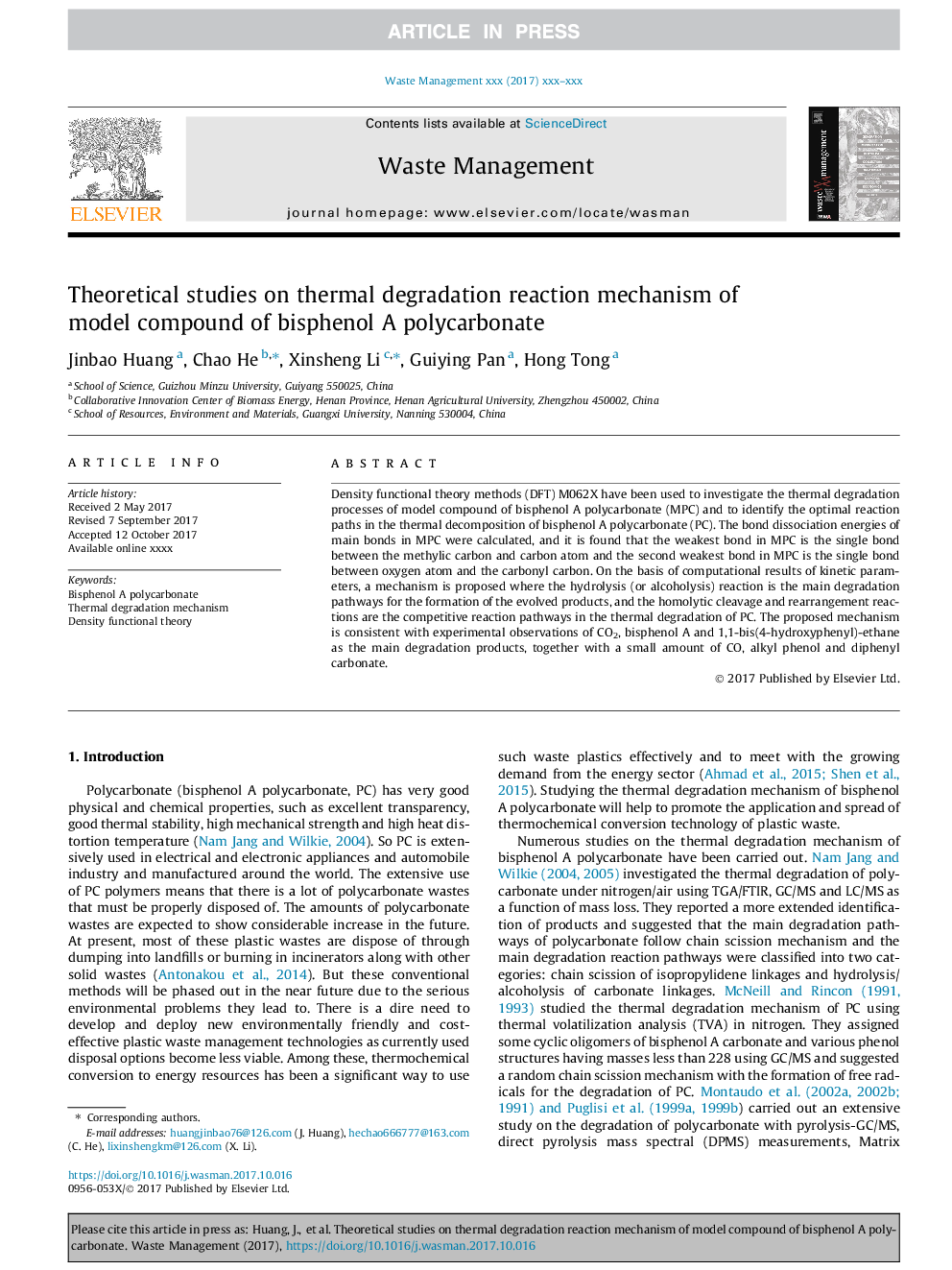| Article ID | Journal | Published Year | Pages | File Type |
|---|---|---|---|---|
| 8870202 | Waste Management | 2018 | 11 Pages |
Abstract
Density functional theory methods (DFT) M062X have been used to investigate the thermal degradation processes of model compound of bisphenol A polycarbonate (MPC) and to identify the optimal reaction paths in the thermal decomposition of bisphenol A polycarbonate (PC). The bond dissociation energies of main bonds in MPC were calculated, and it is found that the weakest bond in MPC is the single bond between the methylic carbon and carbon atom and the second weakest bond in MPC is the single bond between oxygen atom and the carbonyl carbon. On the basis of computational results of kinetic parameters, a mechanism is proposed where the hydrolysis (or alcoholysis) reaction is the main degradation pathways for the formation of the evolved products, and the homolytic cleavage and rearrangement reactions are the competitive reaction pathways in the thermal degradation of PC. The proposed mechanism is consistent with experimental observations of CO2, bisphenol A and 1,1-bis(4-hydroxyphenyl)-ethane as the main degradation products, together with a small amount of CO, alkyl phenol and diphenyl carbonate.
Related Topics
Physical Sciences and Engineering
Earth and Planetary Sciences
Geotechnical Engineering and Engineering Geology
Authors
Jinbao Huang, Chao He, Xinsheng Li, Guiying Pan, Hong Tong,
